S-METOLACHLOR
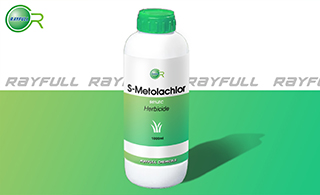 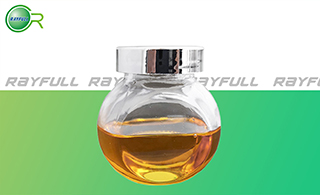 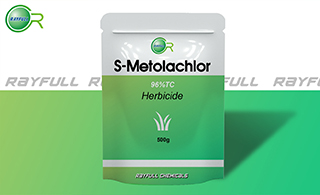 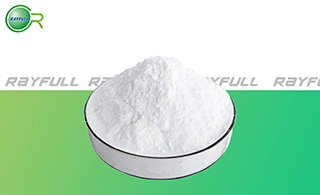 高效异丙甲草胺 高效异丙甲草胺
Introduction: Isomer herbicide mixture used to control grasses and some broad-leaved weeds in a wide range of crops including corn, soybeans, beans & peas, potatoes, sugarbeet, lupin, fruit trees.
Common name: S-Metolachlor
Another name: alpha-Metolachlor, dualgold, Smmetolachlor, Brawl, Pennant, Magnum, S-Metholachlor, Dual Gold, Dual II Magnum, metolachlor(alpha), s-metolachlor pestanal, etc.
Chemical name: mix of: (aRS,1S)-2-chloro-6'-ethyl-N-(2-methoxy-1-methylethyl)acet-o-toluidide and 20-0% (aRS,1R)-2-chloro-6'-ethyl-N-(2-methoxy-1-methylethyl)acet-o-toluidide
Empirical formula: C15H22ClNO2
Structural formula:
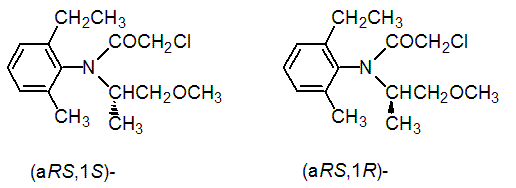
Mol. Weight: 283.79 g/mol
CAS No.: 87392-12-9
Specifications
Leading S-Metolachlor supplier
S-Metolachlor 960 g/L EC
S-Metolachlor 96% TC
Packing:
BULK PACKING
Solid: 25kg/Bag, 25kg/Drum, 50kg/Drum etc.
Liquid: 200L/Drum, 20L/Drum, 10L/Drum ect.
SMALL PACKING
Solid: 1kg/Alu bag, 500g/Alu bag, 200g/Alu bag, 100g/Alu bag, 50g/Alu bag, 15g/Alu bag etc.
Liquid: 5L/Drum, 1L/Bottle, 500ml/Bottle, 250ml/Bottle, 100ml/Bottle, 50ml/Bottle etc.
Customerized packing label
S-Metolachlor FAO standard
Professional registration
HAZARDS IDENTIFICATION
Hazard statement(s)
H317: May cause an allergic skin reaction.
H410: Very toxic to aquatic life with long lasting effects.
Precautionary statement(s)
P261: Avoid breathing dust/fume/gas/mist/vapors/spray.
P272: Contaminated work clothing should not be allowed out of the workplace.
P273: Avoid release to the environment.
P280: Wear protective gloves/protective clothing/eye protection/face protection.
P302+P352: IF ON SKIN: wash with plenty of water.
P321: Specific treatment (see ... on this label).
P333+P313: IF SKIN irritation or rash occurs: Get medical advice/attention.
P363: Wash contaminated clothing before reuse.
P391: Collect spillage.
P501: Dispose of contents/container to ...
Supplemental Hazard Statements: none
MAMMALIAN TOXICOLOGY
Acute toxicity: 1) Acute oral LD50 for rat: 2577 a.i.mg/kg. 2) Acute dermal LD50 for rat: >2000 a.i.mg/kg. 3) Inhalation LC50 (4 h) for rat: >2.91 a.i.mg/L. 4) Not a skin irritant (rabbits). 5) Not a eye irritant (rabbits). 6) May cause sensitisation by skin contact (guinea pigs).
ADI: 0.1 mg/kg b.w./day [Dog, SF=100]
Classification:
Toxicity class WHO (a.i.): III (Slightly hazardous)
US EPA Classification (formulation):III (Caution - Slightly toxic)
EC Risk Classification: Xn - Harmful: R43; N - Dangerous for the environment: R50, R53
ECOTOXICOLOGY
Effect on birds: low toxicity to birds, acute LD50 for Mallard ducks is >2510 a.i.mg/kg. Effect on fish: moderate toxicity to fish, acute 96 hour LC50 for Rainbow trout is 1.23 a.i.mg/L. Effect on aquatic invertebrates: moderate toxicity to aquatic invertebrates, acute 48 hour EC50 for Daphnia magna is 26.0 a.i.mg/L. Effect on algae: high toxicity to algae, acute 72 hour EC50 for Pseudokirchneriella subcapitata is 0.008 a.i.mg/L. Effect on honeybees: low-moderate toxicity to honeybees, contact acute 48 hour LD50 is >200 a.i.μg/bee; oral acute 48 hour LD50 is >85 a.i.μg/bee. Effect on earthworms: moderate toxicity to earthworms, acute 14 day LC50 is 570 a.i.mg/kg.
ENVIRONMENTAL FATE
Animals: Rapidly oxidised by rat liver oxygenases via dechlorination, O-demethylation and side-chain oxidation; conjugation by glutathione S-transferases. Plants: Metabolism involves dechlorination and conjugation to glutathione S-transferases, followed by further degradation to polar, water-soluble, non-volatile metabolites. Soil/Environment: Major aerobic metabolites are derivatives of oxanilic and sulfonic acids; DT50 (field) 11-30 d; DT90 (field) 36-90 d.
Usage: Reported by T. R. Dill et al. (Proc. North Centr. Weed Sci. Soc., 1996, 51, 58-59). Introduced by Novartis Crop Protection AG (now Syngenta AG). Patents: US 5002606; EP 77755. Manufacturers: Syngenta. Biochemistry: Cell division inhibitor; more recent research suggests chloroacetamides may inhibit synthesis of very long chain fatty acids (J. Schmalfuss et al., Abstr. Meeting WSSA, Toronto, 40, 117-118, 2000; P. Böger, Abstr. III Int. Weed Control Congr., Brazil 2000). Maize tolerance of chloroacetamides is attributed to rapid detoxification by glutathione S-transferases.
Application: Selective herbicide, absorbed predominantly by the hypocotyls and shoots; inhibits germination. Control of annual grasses (Echinochloa, Digitaria, Setaria, Brachiaria, Panicum, and Cyperus) and some broad-leaved weeds (Amaranthus, Capsella, Portulaca) in maize, sorghum, cotton, sugar beet, fodder beet, sugar cane, potatoes, soya beans, peanuts, sunflowers, various vegetables, and pulse crops. Applied pre-plant incorporated, pre-emergence or early post-emergence, at 0.8-1.6 kg/ha. Often used in combination with broad-leaved herbicides, to extend spectrum of activity. Tolerated by most broad-leaved crops, maize, sorghum (when safened wth fluxofenim or oxabetrinil).
| 






